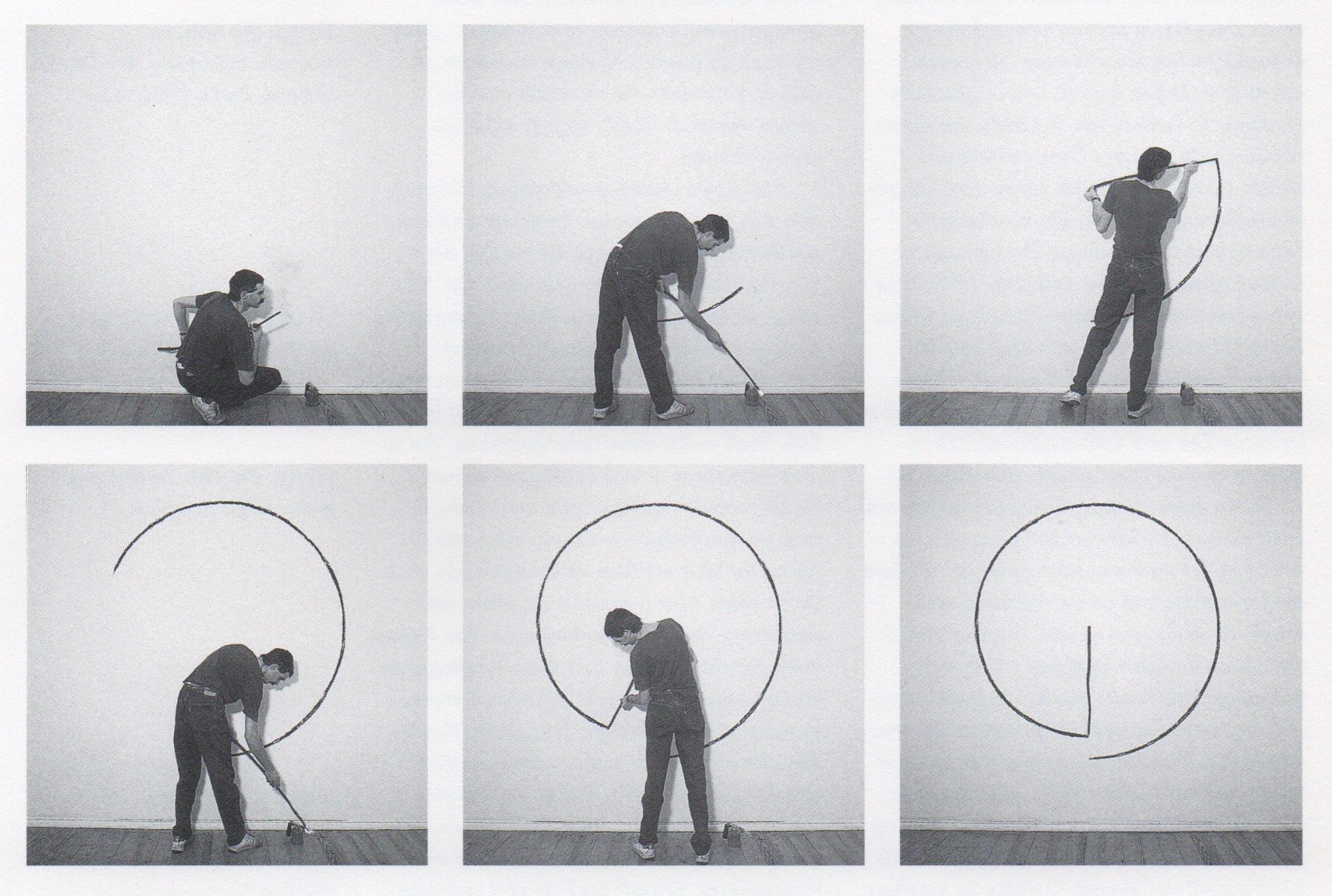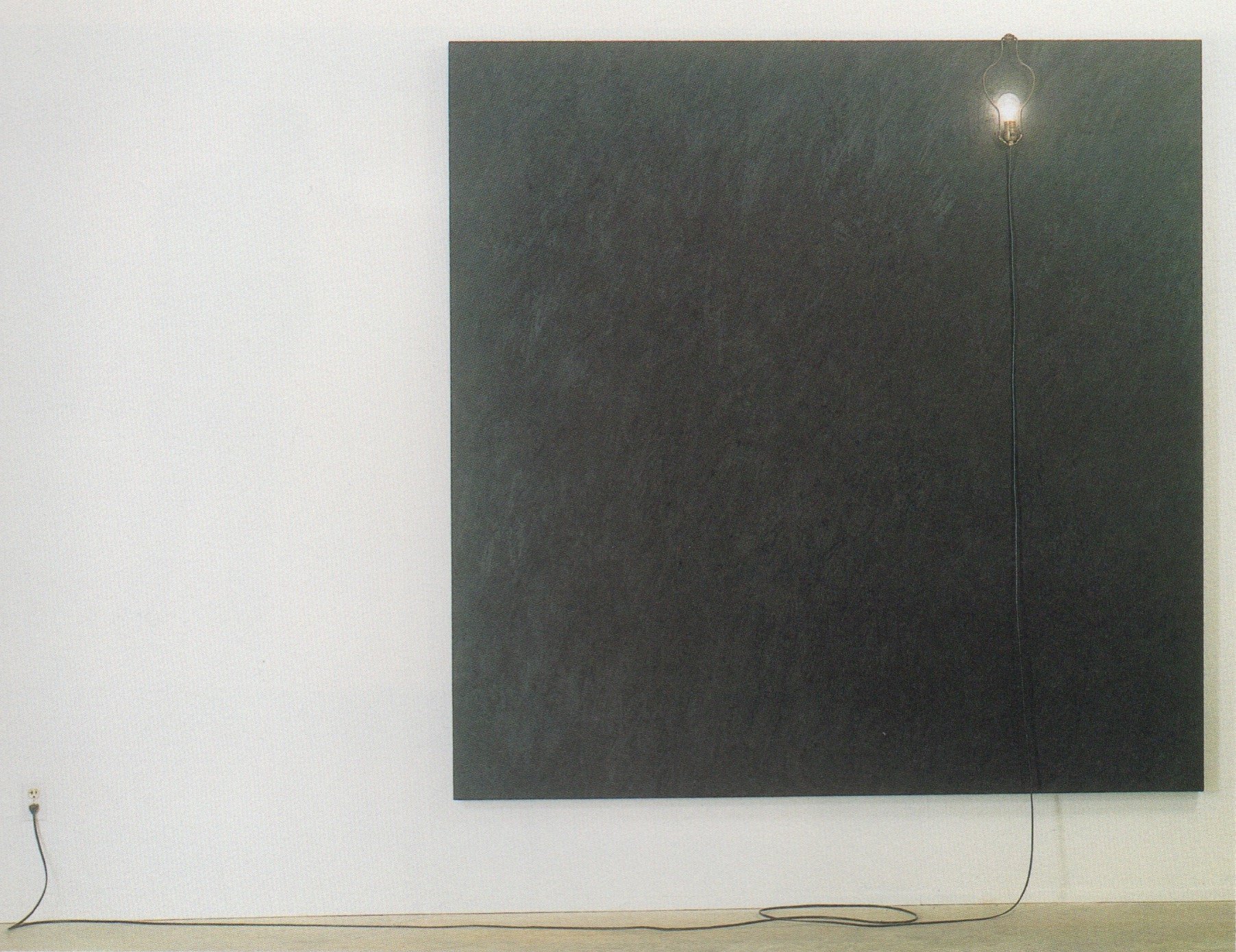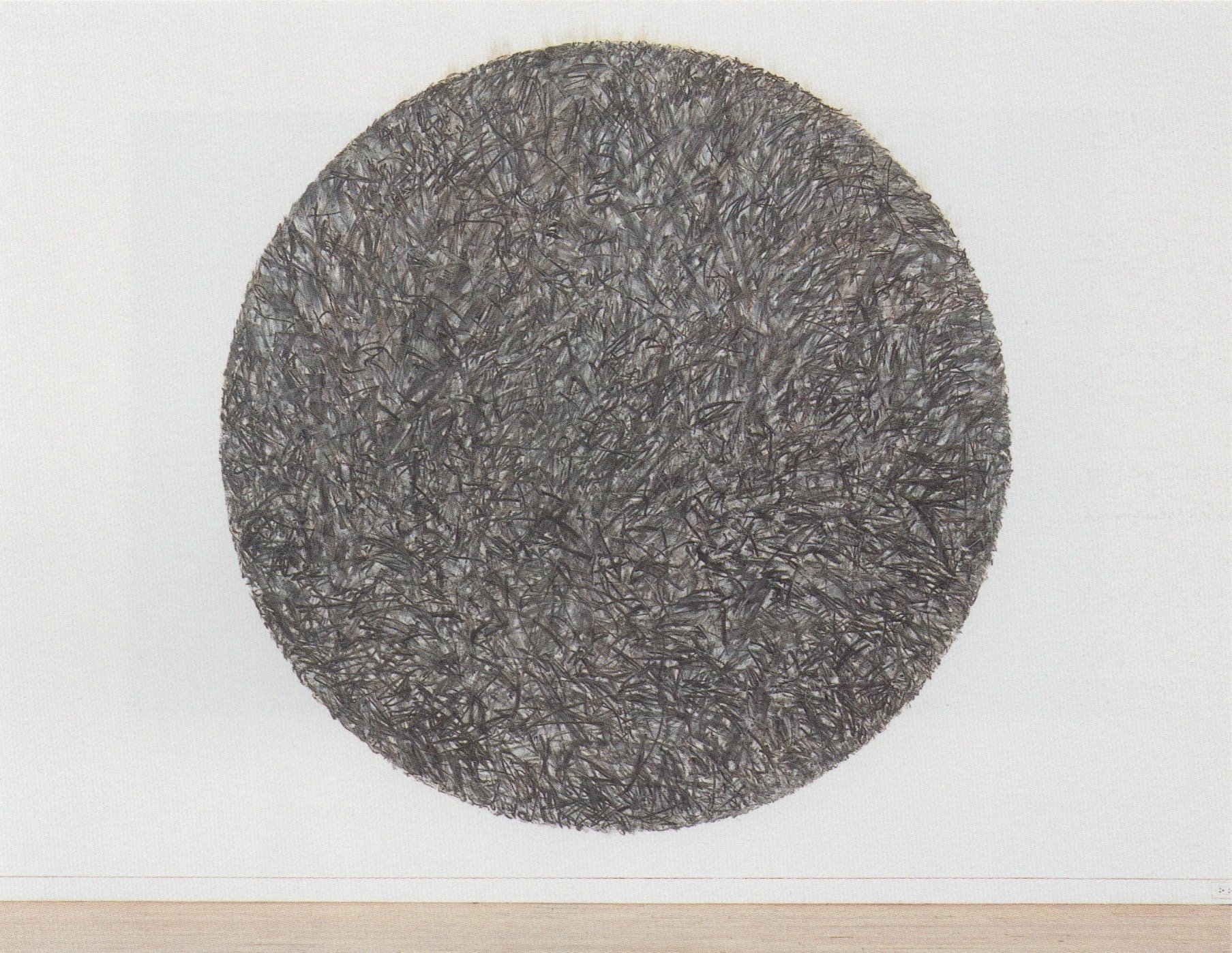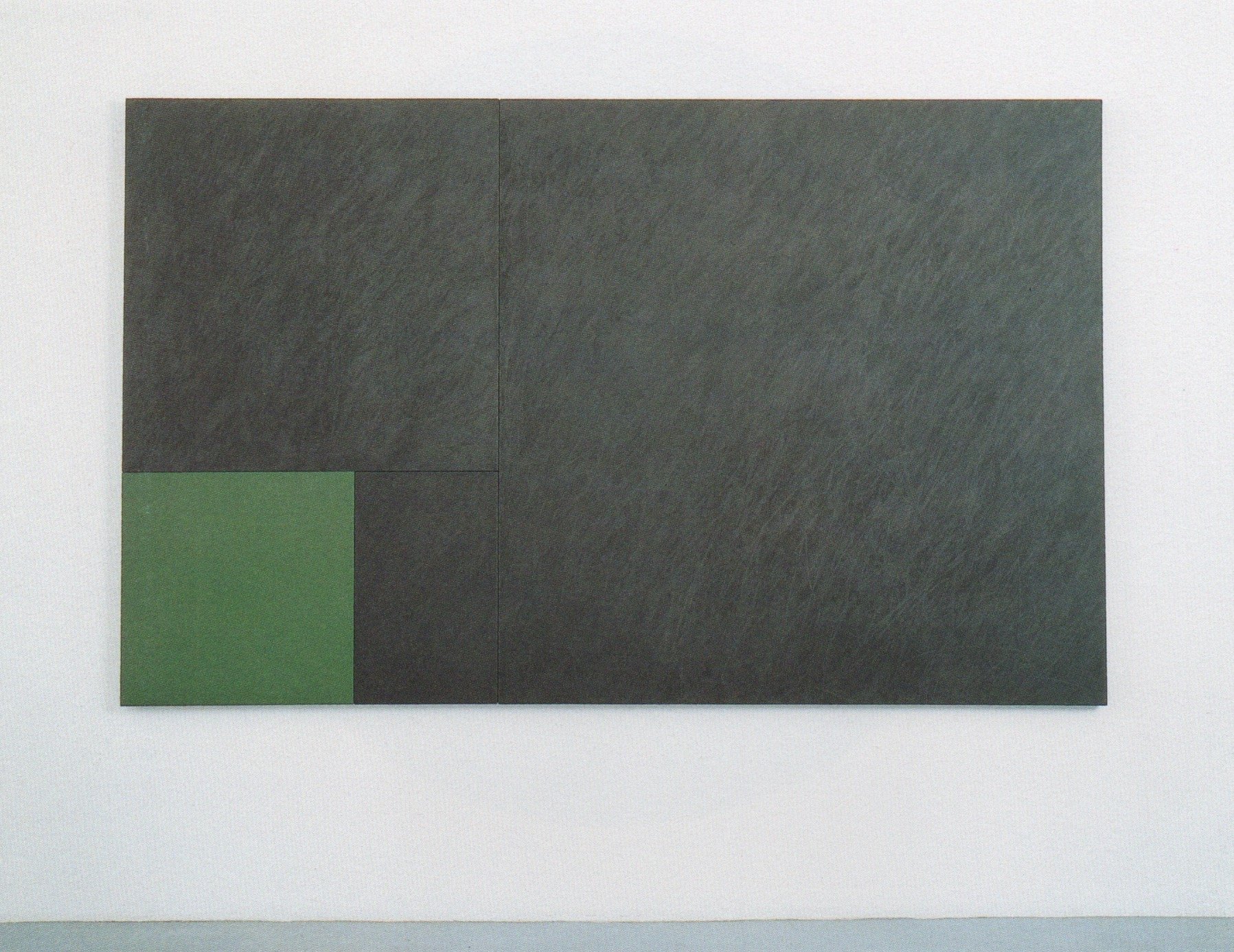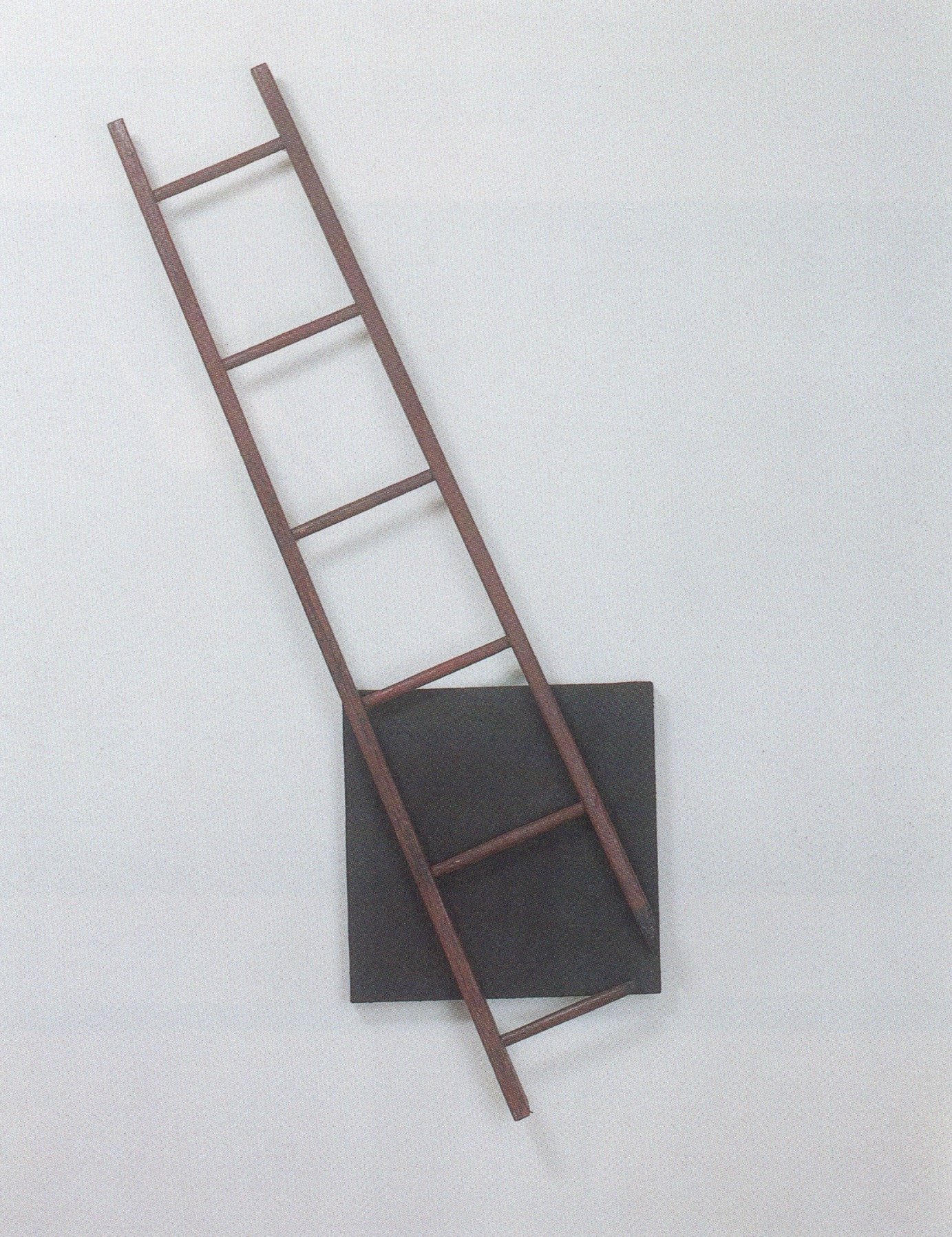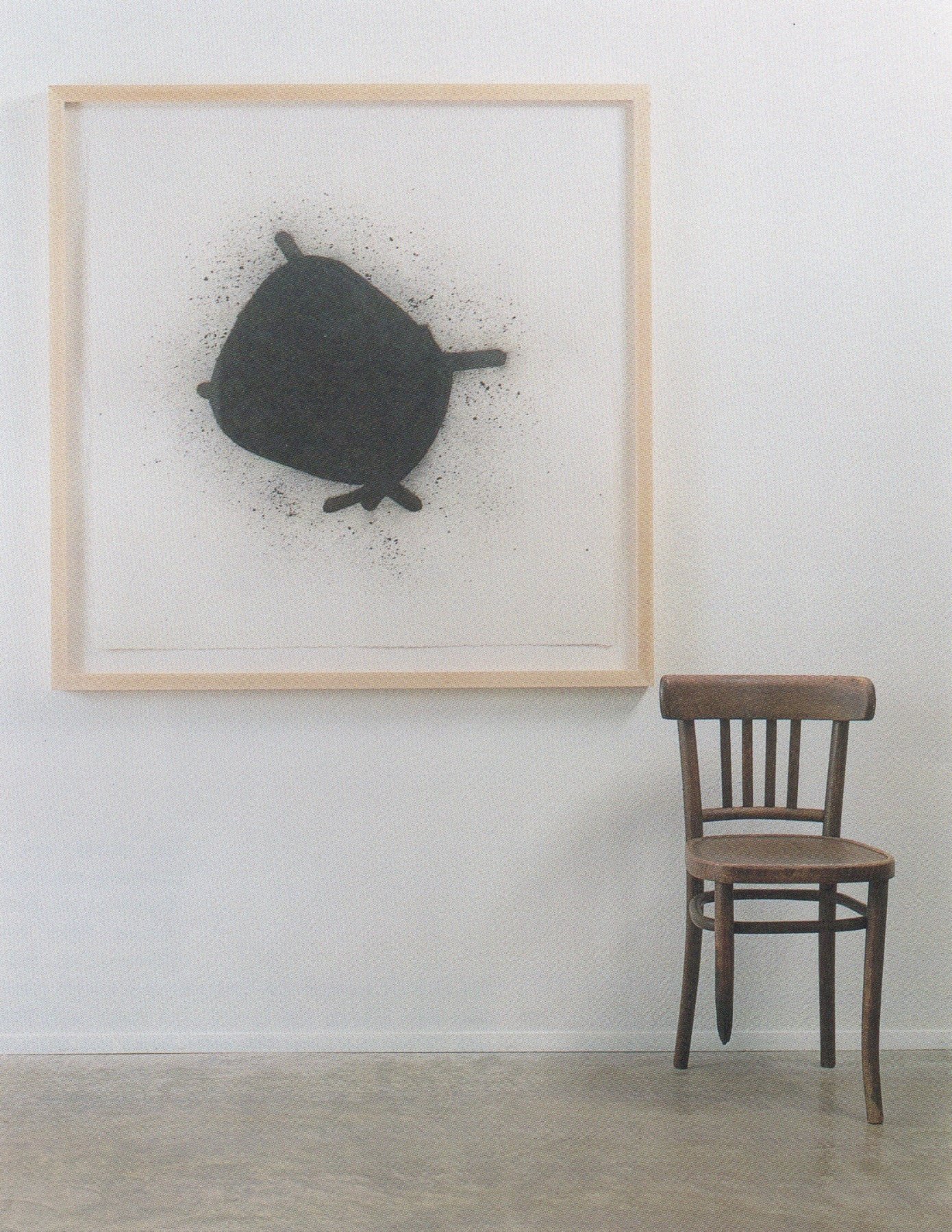in 1983, i was living in london, and one morning i decided to walk to my studio. in a nearby street on the way to the studio i found abandoned, in the gutter, a length of timber. […] however, for whatever reason, i was attracted to it. so, like a magpie, i claimed it as mine and dragged it back to the studio. i was not working with wood at the time and i had never worked with wood before. i really had no intention of using this length of timber in my work. so i leant it up against the wall and forgot about it, when suddenly, for no apparent reason, it slipped and fell to the floor. as it fell, i noticed an interesting relationship between the length of wood on the floor and the scratch marks on the wall. it was on accident that i could not ignore. intent on making a more definite statement, i decided to burn the tip of the wood, transforming the length of timber into a drawing instrument, and keeping the other end of the wood firmly fixed to the floor i pushed the charred end back up on to the wall. […] the first burnt wood drawing.
as the burnt wood work developed, i became increasingly interested in the concept that if you take a wooden stick, or any wooden object, and if you burn it, and if you then take that object and draw with it, and if you sustain that activity of burning and drawing long enough, the object, that we once knew, disappears. but where has it gone? you cannot loose matter, as nothing is ever lost. this idea, this thought, this observation formed the beginning of a series that i am still working on, called the phoenix drawings, taking its name from the mythological godlike bird that had lo burn itself every five hundred years to rise rejuvenated from its ashes.
i am intrigued with our understanding of reality, and with the idea not only of what we can see, but also with the idea of what we cannot see. fire is not a negative force, it is tremendously positive, and by burning a wooden object, be it a stick, a choir, a wooden table or a bowl, (and with the charred embers of that object i draw for example the shadow of itself on the wall). i see myself as the catalyst, transforming that object into a surface of blackened ash. i am trying to capture visually the very essence, the very spirit of that object, leaving behind a memory of its former self. i wish to suggest that the object in effect still exists. it has just been transformed into another energy-transformed from “reality into abstraction”.
eric snell, 1994

